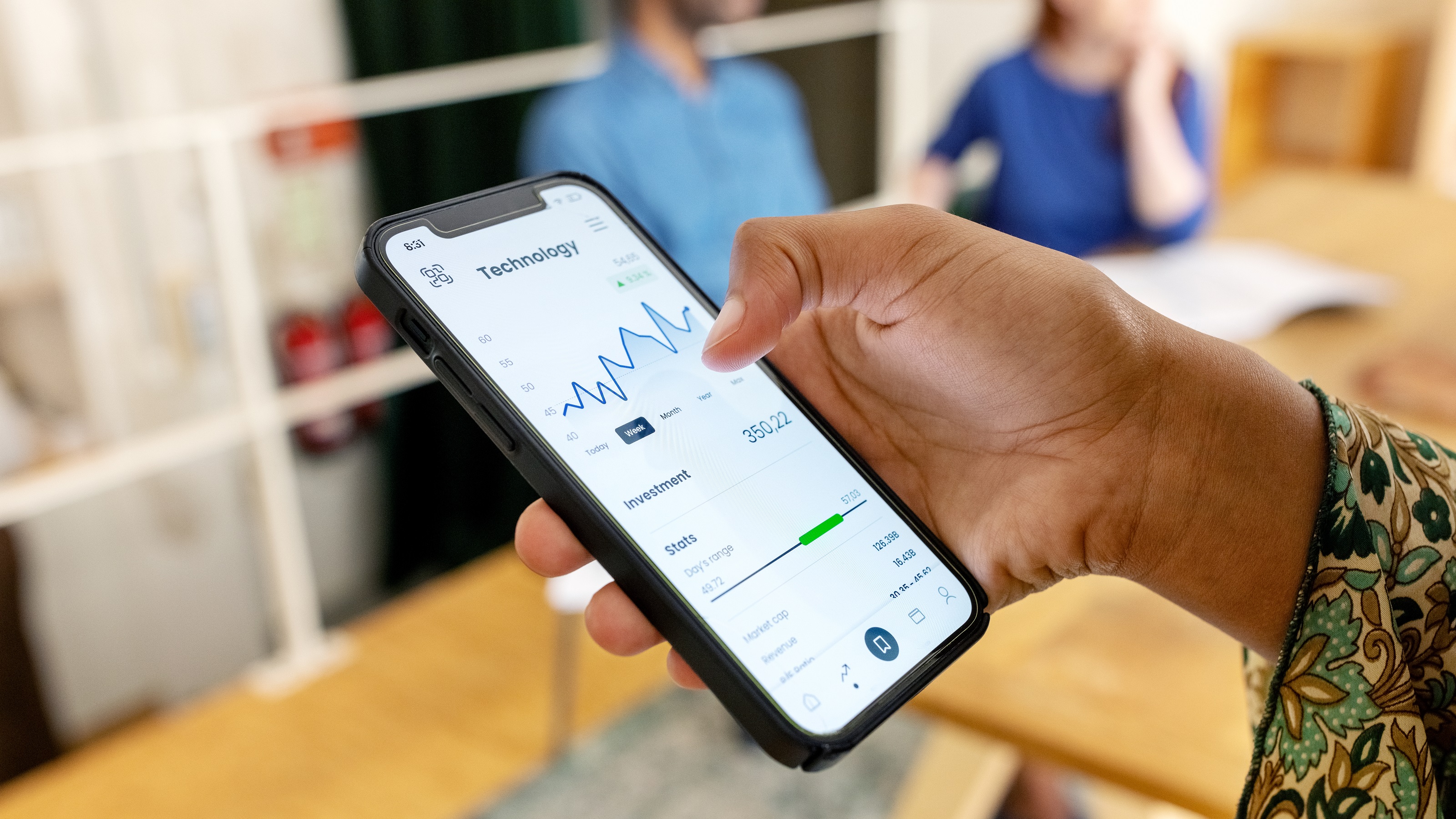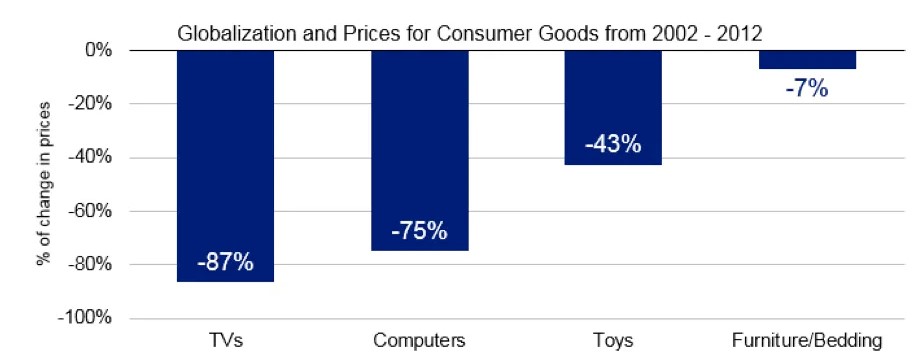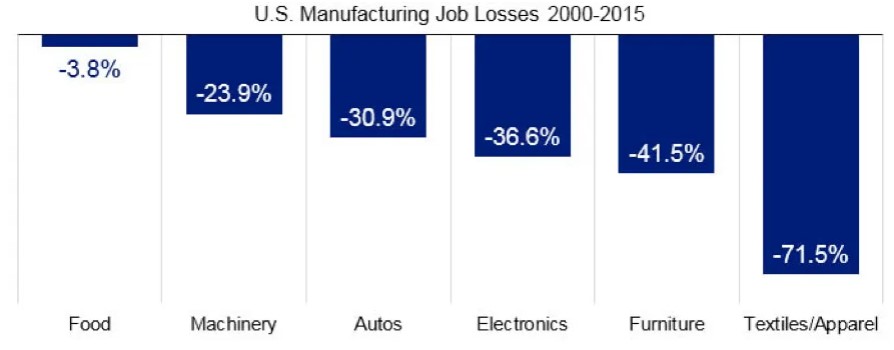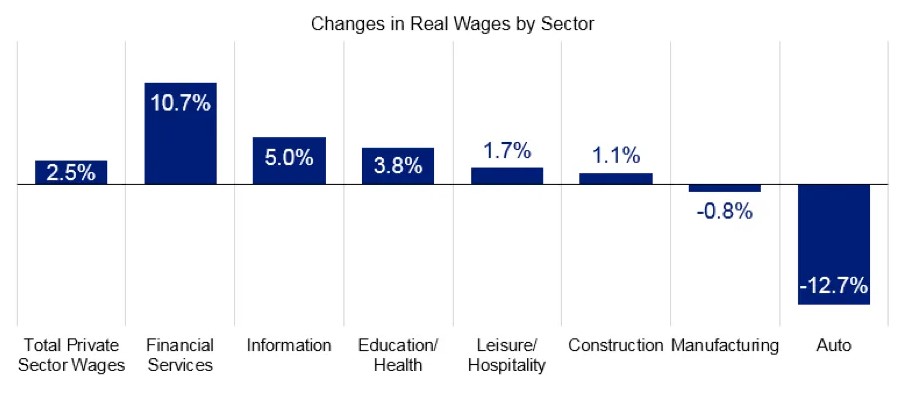What Investors Can Learn from the 2016 Presidential Election
Beyond the candidates, we're seeing a spotlight on globalization and demographics — two forces sure to steer the economy for years to come.


Ask any political junkie, and they'll tell you that the 2016 presidential campaign has been one of the strangest they've ever experienced. The rise of billionaire/reality TV star Donald Trump and Vermont Senator Bernie Sanders, the wild and woolly TV debates, and how wrong the pundits have been at predicting anything has been unprecedented.
But if we set aside the drama, we may discover that the most important thing we can learn from this election has nothing to do with the candidates. Instead, the most important takeaways are how the two mega-forces of globalization and demographics have changed our country and the influence they will have for years to come. Investors would be wise to pay attention.
We're living in a global village
First let's look at globalization. We've heard a lot of talk about trade, trade agreements and jobs from the candidates, but unless you've been personally affected, much of it seems more abstract than real. So let's make it real.

Sign up for Kiplinger’s Free E-Newsletters
Profit and prosper with the best of expert advice on investing, taxes, retirement, personal finance and more - straight to your e-mail.
Profit and prosper with the best of expert advice - straight to your e-mail.
There's no question that we have reaped the economic benefits of globalization. Trade liberalization alone increases our annual output by $300 billion to $500 billion, according to the Peterson Institute. Trade creates new jobs as well as destroying old ones. In 1992, 14.5 million or 10.4% of all jobs were tied to trade. By 2014, that number had grown to 41 million or 21.7% of all jobs, according to Business Roundtable.
But many of us missed the fact that globalization also gave us the benefit of lower prices on personal goods. The following chart gives you an idea of what happened to the prices of some commonly purchased goods between 2002 and 2012.

Yes, there have been downsides to these consumer benefits. The first trade-off of globalization has been domestic jobs. You can't miss that on the campaign trail. But it's important to understand that while not all of the job losses are a result of globalization, many are. The chart below shows manufacturing job losses by sector between 2000 and 2015. As you can see, while a number of sectors have been hit, a few have been decimated.

When you see that 31% of all automobile workers have lost their jobs since 2000, it's easy to understand why voters in Michigan and Ohio are frustrated and angry. And when you see that 71% of all textile and apparel jobs have been lost, it's easy to relate to concerns expressed by voters in the Carolinas.
The second trade-off has been lower wages. The next chart shows the change in real wages by sector between January 2009 and December 2015. While wages haven't grown dramatically for any sector (except financial services), it's clear that individuals in the services sectors (financial services, information, education/health and leisure/hospitality) have fared much better than individuals in the construction, manufacturing and auto sectors.

So we've learned that globalization is a double-edged sword. Many individual companies and investors have benefitted from rising stock prices tied to increased corporate sales and profits. But it has been devastating for a number of U.S. cities, workers and their families. During this election cycle, we've heard the voices of many of those affected individuals.
Changing demographics
For the first time, the Millennial generation (individuals between 18 and 43) will match up with the Baby Boomers (born between 1946 and 1964) in population size. And as the Baby Boomer population decreases, the Millennials will take their place in history as the largest generation of Americans. What many don't understand is that we're just beginning to see what happens when the Millennials flex their cultural and political muscles.
Looking back, it's easy to see how the Baby Boomer generation dramatically affected our country and the economy. According to a 2008 McKinsey and Company study, Baby Boomers broke all of the previous generations' records for attaining the highest levels of education. During their working years, they have seen their incomes rise to the highest level of all generations.
As consumers, Baby Boomers have been the dominant spenders for two decades, and they have spent more at every age than prior generations. They have driven the growth of industries such as personal electronics, recreation and health care.
As investors, Baby Boomers have prospered from unprecedented increases in the stock and real estate markets. As the value of their assets rose, their spending increased, and the generation's saving rate fell to all-time lows. Now, as they look ahead to the end of their careers and retirement, they will change the face of retirement in America.
Like Baby Boomers, the Millennial generation will make its mark on the country by influencing our culture and the economy. Millennials have been particularly visible in their support for Democrat Sanders and his message. In the Michigan primary in early March, exit polling found that 81% of Democratic voters age 18 to 29 cast their ballots for Senator Sanders. In New Hampshire, 83% of Democratic voters chose Senator Sanders.
According to a 2014 Pew Research Center study, they also look different than the generations that preceded them. For example, Millennials:
- Are more ethnically diverse with 43% of them being nonwhite compared with 28% of Baby Boomers
- Are less religious with 35% having no religious affiliation compared with 17% of Baby Boomers
- Marry later with just 26% of the Millennials between 18 and 33 years old being married versus 48% of individuals the same age in 1980
These results shouldn't be surprising. This generation was shaped by the shock of 9/11. Yet, they are more supportive on issues such as gay marriage and are more open to different ways of life than previous generations.
This election, the Millennial generation is making itself heard, and this is just the beginning. While we don't know where they will take us, we do know that they will be a social and economic force for many years to come.
Globalization and demographics, two mega-forces and hot topics this election, will continue to influence the markets in the future. The best advice to investors: Keep your eyes and ears open to sectors and companies that develop the best ways to capitalize upon these forces, and invest accordingly.
Related Content
Get Kiplinger Today newsletter — free
Profit and prosper with the best of Kiplinger's advice on investing, taxes, retirement, personal finance and much more. Delivered daily. Enter your email in the box and click Sign Me Up.

Jan Blakeley Holman is director of advisor education at Thornburg Investment Management. She is responsible for identifying and creating advisor education programs that support financial advisors as they work with their clients and prospects. Jan has spent more than four decades in the financial services industry. Over the course of her career, she’s served as a financial advisor, an advisor to financial advisors and a financial services corporate executive. Visit Thornburg’s website to enjoy more of Jan’s articles and podcasts.
-
 12 Investments No Retiree Should Make
12 Investments No Retiree Should MakeIn retirement, when it's wise to take fewer risks with your nest egg, some investments are just nuts.
By David Rodeck
-
 What the Capital One Discover Merger Means for Your Wallet
What the Capital One Discover Merger Means for Your WalletThe Capital One Discover merger reshapes the credit card landscape and could impact your credit card rewards, interest rates and card perks.
By Paige Cerulli
-
 Before You Invest Like a Politician, Consider This Dilemma
Before You Invest Like a Politician, Consider This DilemmaAs apps that track congressional stock trading become more popular, investors need to take into consideration some caveats.
By Ryan K. Snover, Investment Adviser Representative
-
 How to Put Together Your Personal Net Worth Statement
How to Put Together Your Personal Net Worth StatementNow that tax season is over for most of us, it's the perfect time to organize your assets and liabilities to assess your financial wellness.
By Denise McClain, JD, CPA
-
 Bouncing Back: New Tunes for Millennials Trying to Make It
Bouncing Back: New Tunes for Millennials Trying to Make ItAdele's mournful melodies kick off this generation's financial playlist, but with the right plan, Millennials can finish strong.
By Alvina Lo
-
 Early-Stage Startup Deals: How Do Convertible Notes Work?
Early-Stage Startup Deals: How Do Convertible Notes Work?Some angel investors support early startups by providing a loan in exchange for a convertible note, which includes annual interest and a maturity date.
By Murat Abdrakhmanov
-
 SRI Redefined: Going Beyond Socially Responsible Investing
SRI Redefined: Going Beyond Socially Responsible InvestingNow that climate change has progressed to a changed climate, sustainable investing needs to evolve to address new demands of resilience and innovation.
By Peter Krull, CSRIC®
-
 Here's When a Lack of Credit Card Debt Can Cause You Problems
Here's When a Lack of Credit Card Debt Can Cause You ProblemsUsually, getting a new credit card can be difficult if you have too much card debt, but this bank customer ran into an issue because he had no debt at all.
By H. Dennis Beaver, Esq.
-
 Going to College? How to Navigate the Financial Planning
Going to College? How to Navigate the Financial PlanningCollege decisions this year seem even more complex than usual, including determining whether a school is a 'financial fit.' Here's how to find your way.
By Chris Ebeling
-
 Financial Steps After a Loved One's Alzheimer's Diagnosis
Financial Steps After a Loved One's Alzheimer's DiagnosisIt's important to move fast on legal safeguards, estate planning and more while your loved one still has the capacity to make decisions.
By Thomas C. West, CLU®, ChFC®, AIF®